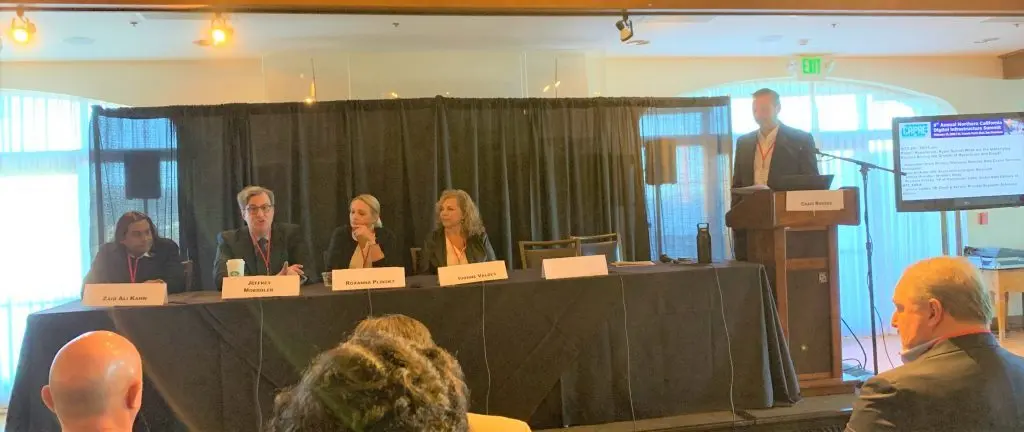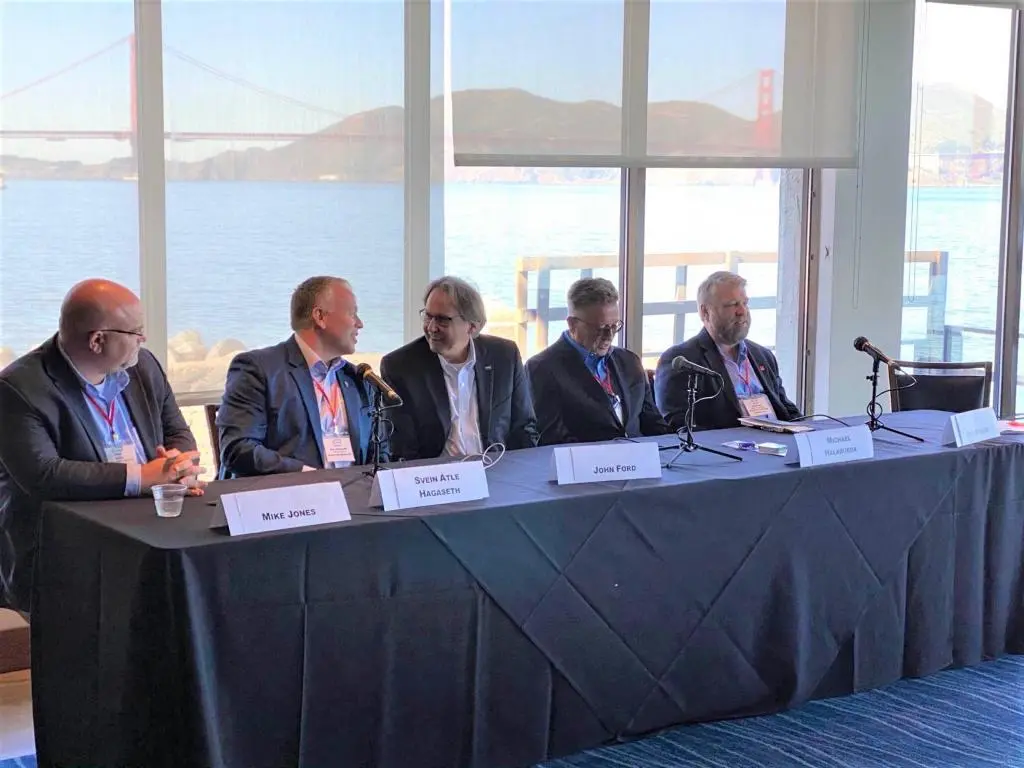Yesterday I was invited to participate and speak at the CAPRE Digital Infrastructure Summit in San Fransisco for the third year in a row. The panel addressed the push and push back for renewable energy; the factors driving adoption and remaining challenges to overcome. I will get back to that later, but first I want to summarize the highlights of the very interesting keynote panel, moderated by Craig Rhodes.
by Svein Atle Hagaseth, CSO of Green Mountain
CAPRE Digital Infrastructure Summit: Rhodes (Strucrured) started the discussion by sharing some thoughts from their consultancy perspective. He stated that there is still a significant growth and appreciation from the Enterprise segment on the availability and use of consultancy. Clients need support on their journey, juggling cloud vs. hybrid vs. on-premise. His message was that we need to leverage the combined expertise to guide clients correctly through the “maze” of choices.
Growth, growth growth..

Jeffrey Moerdler (Mintz Levin) then mentioned that data continues to grow exponentially, and consequently speed to market seems to be a huge issue, especially for the hyperscalers. He believes that with the magnitude of different options in the marketplace there will be enough growth and opportunity for everyone. The market needs a spectrum of choices.
Ivonne Valdes (Schneider Electric) chimed in that the numbers speak for themselves. We are in an industry where we will see growth from a market size of 20 billion USD today, to 65 billion in a few years time. This will create a unique opportunity for hyperscalers and colos to collaborate to secure growth.
I agree with both Jeffrey and Ivonne’s points, we experience the same with our clients in Green Mountain. The growth is occurring everywhere, but we see that the hyperscalers address each market individually, optimizing their different go-to-market models. When building themselves it can take 24-48 months to get up and running while by cooperating with a colo the time can be reduced to 6-9 months. So there are plenty of opportunities for cooperation in this area.
Roxanna Plinsky (NTT) agreed that they see the same development in Europe. She also talked about the massive developments outside of the traditional FLAP-D markets as new technologies develop in markets who have some core asset in a that given market. As an example, Eastern Europe has a high development of gaming, and there is growth in the non-traditional DC hubs of Africa where enormous amounts of users are going to come online over the coming years.
In Green Mountain, we also see this emergence of new markets, and that Tier 2 and Tier 3 markets seem to be getting a lot of traction. A reason is that access to land and renewable power is becoming a constraining factor in traditional markets, whereas areas like the Nordics (and Norway especially) have an overflow of renewable power and cheap available land.
AI will drive everything
Zaid Ali Khan (Microsoft) drew the discussion into a new direction stating that AI is as big as the invention of electricity; it is going to drive everything! It will change the way we think, build and operate DCs. He believes China has a head start, being able to explore every avenue of the technology without the regulations we see elsewhere. Data will drive how technology is used and how technology is made going forward.
Ivonne emphasized that integration and being able to measure everything is going to change how you operate your DC. Now you can control your DC from anywhere at anytime. This also enables better use of different operational models and that hybrid is ready and a true option.
A changing landscape
Jeffrey then drove the discussion into 5G. He stated that 5G is still an immature technology and far from operational. It is still in its test period. Zaid said that most applications will not be dependent on 5G, as most applications will only have a need to push out data at some time. The landscape is changing, DCs used to be located close to POP and everything was built around that. It is now getting to a point where the market is saturated. The change now is how do we deal with these new edge applications, and how do we transport this data. This will also influence fiber. We still need more routes and bigger pipes and we will see joint developments increase between the different players. Lot of changes will happen on the fiber side, as the key will be how to create maturity on how you transport data.
Ivonne concluded the key-note panel at by talking about utilities needing to be a key going forward. How do we continue to develop enough capacity as all these assets are stressed today?
The CAPRE Digital Infrastructure Summit Sustainability panel
So back to my own panel: and the push and push back on sustainability. We had a very good discussion about the changing client requirements and how sustainability is now a major decision factor. We spoke about the need to find new ways to develop alternative sources, that the existing capacity of renewables is stressed and that incentives matter.
In my opinion, these are all good discussions, but we have been talking about this for years. I believe time is running out, we must stop talking and start doing. We have most of the solutions already, so I think it boils down to balancing between the two “greens” – green IT and cost. I think we need to dare to think differently and dare to do the right thing. I am happy to see the big players are taking the lead. However, I also stressed in my panel that I believe we also need regulation and incentives to be able to get things done. Otherwise I worry that the other “green”, cost, will win in many cases still.
I also hope most clients will decide to go green vs buying green. In the long run, going all in on sustainability pays back – in terms of purpose, reputation, revenue and cost.

